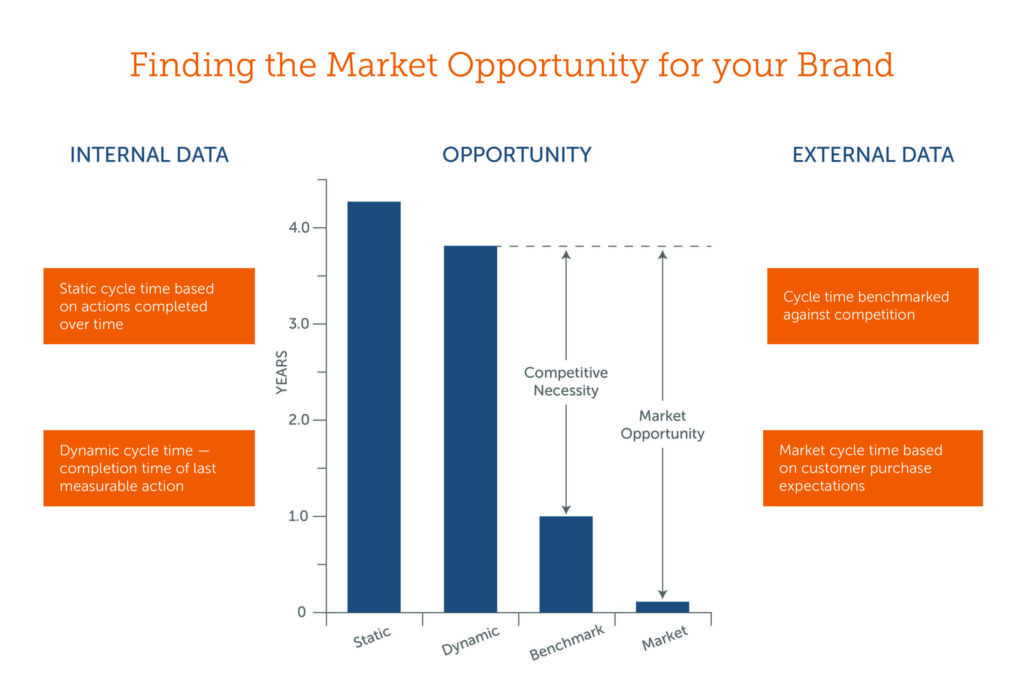Better, Faster, Stronger Brand Management
Speed is critical
We’d challenge anyone to argue that speed is not critical for business performance. The research is in (and has been in for a while) that speed matters at all levels. In a recent McKinsey report, survey findings confirmed that organizational speed is an essential ingredient for outperformance in times of unprecedented change.
In addition to primary research results, general business statistics also tell us we need to shift into warp speed.
- Results are faster: Retailers often only give six months for new products to achieve acceptable sell through rates.
- Judgement is faster: CMO tenure has dropped to just 18 months.
- Failure is faster: 66% of all new products fail within two years.
The need for increasing speed is also redefining risk, as 96% of innovations fail to return their cost of capital because they simply can’t keep up.
Defining speed
In our previous blog “Unlocking Value Through Brand Ecosystems,” we said that traditional brand management is becoming obsolete. Instead of brand being the core of strategy, the user of the brand must be the focus. Brand managers need to solve the human problems their teams face. This change means brand management is moving from rigid sets of rules to a curation of the dynamic journeys that users undertake. To capitalize on this shift, brand managers must change their definition of speed.
The diagram below comes from Marilyn Norris and Bill Bigler’s book, The New Science of Strategy Execution. It zooms in on the four areas of improvement in timing (internal and external) that are possible.

1. Static cycle time: How fast we improve a daily task where reduction in time is considered successful: we are processing orders 30% faster, it takes us 40% less time to generate a report, or we fulfill orders in 20% less time. These can measure internal improvement but won’t significantly influence the customer experience.
2. Dynamic cycle time: How well we improve the last activity. Much like last click attribution, it emphasizes the final touchpoint before action. While this measure is connected to temporal measures, it again does not necessarily meet any external requirements.
3. Competitive benchmarks: Often the primary consideration, brand managers point to meeting or beating competitive standards as a goal. While this competitive necessity is an improvement, it still leaves brands vulnerable to faster, sleeker competitors who are more attuned to customers.
4. Market time: The market cycle is the rhythm by which users of a brand make decisions. It is the time it takes for any event to have an impact on the brand. In 2022, this happens very quickly. The new standard is to have a set of user experience tools ready to thrive in this fast-moving system.
Market time is the focus for modern brand management and requires a new formula for brand managers.

To effectively respond to market time means a transformation along four organizational characteristics:
- Culture: To find the market time, the C-suite must reconsider the brand users. Instead of looking for an opportunity to improve, they must reconsider the entire customer experience. The team must map the moments they want to control and design the brand around those leverage points.
- Process: To accelerate processes, the company will have to undergo a digital transformation and a shift in culture to go along with it. It’s this combination that creates a series of moments that win more market decisions from users of the brand.
- Structure: With the formula for winning in hand, most firms will have to invert their means of production from 100% internally driven capabilities to including external partners who help them build an ecosystem. This structure keeps the highest-value brand moments in the hands of the firm, and relegates other necessary capabilities to partners who specialize.
- Expertise: In addition to a rethink on the structure, the firm must humbly recognize that they do not create the brand alone. They must extend the brand creation to the brand community and create ways to include content created by users and stakeholders. Not only does this enrich the brand but it allows for lower costs and enables faster innovation.
EA: The need for speed case
Ironically, one of the best examples of a brand that adapted new brand thinking is Electronic Arts’ (EA) management of The Need for Speed Gaming Platform. For nearly 30 years, EA has applied these principles to the best-selling driving game platform (over 150 million units sold).
- Culture: Although EA started as a game developer, it is now known as a global leader in digital interactive entertainment. Headquartered in Redwood City, California, EA is recognized for a portfolio of critically acclaimed, high-quality brands such as EA SPORTS™ FIFA, Battlefield™, Apex Legends™, The Sims™, Madden NFL, Need for Speed™, Titanfall™ and F1™. EA was able to consider the entire customer journey, and capitalize on multiple touchpoints of need instead of just their original product.
- Process: Throughout their history they have understood that they would need to keep pace with technological developments creating games for multiple platforms, consoles, and distribution systems.
- Structure: While they developed the original gaming system, they have allowed various companies to takeover creative development. They maintained tight control over the user experience while transferring the development challenge to the best studios who had the most current technology available.
- Expertise: As the landscaped evolved they partnered with film studios to develop a movie franchise and key technology partners to create new experiences like cloud compete.
To compete and stay relevant, EA has adopted their strategy to users. They have kept pace with the market through an all-in rethink of the user. They have proven for the rest of us that you can deliver speed no matter how fast you need it.
For more information on how you can increase your brand’s speed, reach out to us through the form below. We’d love to discuss.
Contact Us
Let's Connect
Have questions or want to learn more about how Beam can help your business? Get in touch with us today. We're here to help you navigate the digital landscape with ease.